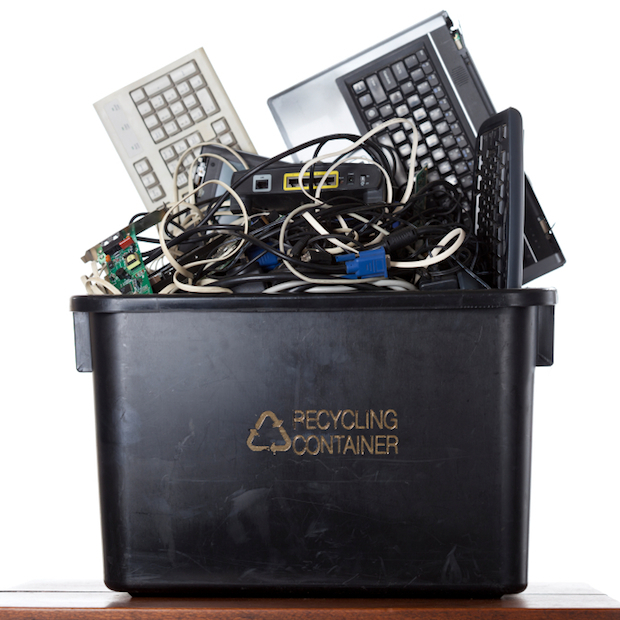All of those cell phones, computers, tablets, toys, and toaster ovens really add up. Not only are consumers gathering more and more electrical and electronic equipment, but we are also tossing much of it in the trash.
The piles of electronic waste, or e-waste, is rising rapidly across the globe, according to a new study by the Solving the E-Waste Problem (StEP) Initiative. The United States and China were responsible for nearly half the world’s total in market volume of e-waste in 2012, which includes anything with a battery or electrical cord.
The figures per capita, however, are far different. China generates about 5.4 kilograms per person, compared to 29.8 per capita in America. The United States has the highest figure of major countries, but it is behind a handful of other places including Singapore, United Arab Emirates, Qatar, Switzerland, Hong Kong and Luxembourg.
The StEP Initiative, which is a partnership of United Nations organizations, industry, governments and non-governmental organizations, wants to help countries better understand their e-waste streams and help build legislation and processes to deal with it. There is a great deal of variability in the effectiveness of e-waste programs between and within countries.
"Although there is ample information about the negative environmental and health impacts of primitive e-waste recycling methods, the lack of comprehensive data has made it hard to grasp the full magnitude of the problem," Ruediger Kuehr, executive secretary of the StEP Initiative, said in a statement. "We believe that this constantly updated, map-linked database showing e-waste volume by country together with legal texts will help lead to better awareness and policy making at the public and private levels."
The StEP Initiative’s interactive map has details on each country’s e-waste numbers and regional or federal rules about how to dispose of the waste. The timing is critical as global e-waste is expected to rise 33 percent to about 72 million tons per year by 2017.
Another new study [PDF] by MIT and the U.S. National Center for Electronics Recycling took a deeper dive into the e-waste generated in the United States. The researchers found about two-thirds of the used electronics in 2010 were collected, yet only about 8.5 percent of those collected units were exported. The researchers say that is likely a low figure. It also does not account for most of the components that are exported after initial recycling in the United States.
One of the problems with exports is that there is not explicit tracking of the products as they move into secondary markets. Also, the country something is exported to is often not the final resting place. A smartphone may first go to Hong Kong, but then be pulled apart with components going to other countries in the region.
Different technologies also have vastly different paths from the United States. Larger items, such as televisions and monitors, are more likely to end up in Mexico, Venezuela, or Paraguay, while mobile phones are more likely to go to Asia or Latin America. Overall, Latin America and the Caribbean are the most common destinations for products, with Asia following and then Africa being the least common destination for North American e-waste.
The studies help provide a clearer picture of the fate of global e-waste, but much more can be done. “We cannot possibly manage complex, transboundary e-waste flows until we have a better understanding of the quantities involved and the destinations. This research is an important first step in that direction,” Joel Clark, founder of the Materials Systems Laboratory at MIT, said in a statement. The researchers recommend creating trade codes for electronics products to enable better tracking, gaining more access to shipment level trade data, and getting greater reporting of re-export destinations.






